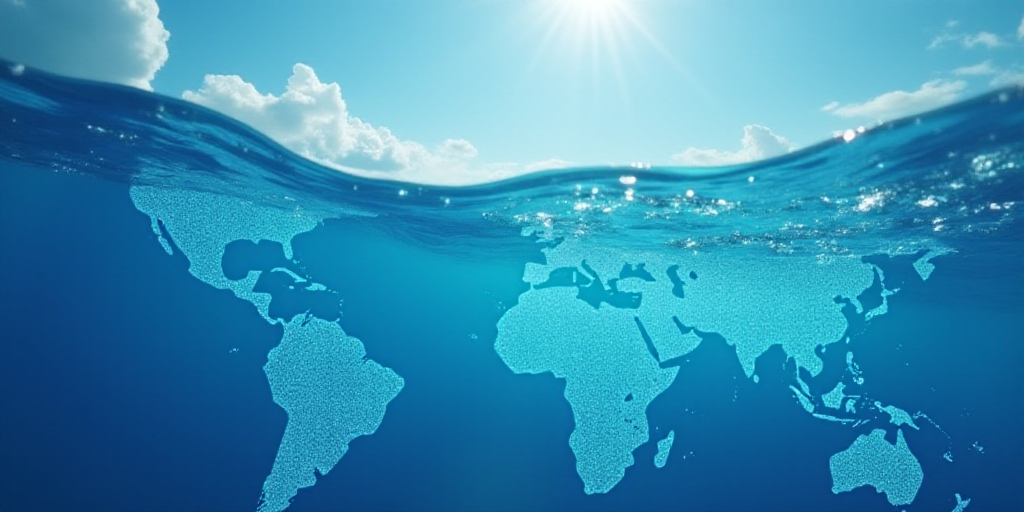Introduction to Blue Economy and its Global Significance
The ocean covers 71% of the Earth’s surface and encompasses 90% of the world’s bioshpere, making it a crucial component of the global economy. It provides food security for over three billion people, facilitates the transportation of more than 80% of global goods, and supports underwater cables transmitting 98% of international internet traffic. If the ocean-based economy were a country, it would be the fifth-largest economy in the world.
However, this valuable economic engine faces significant challenges, including climate change impacts, environmental degradation, lagging productivity, and slow digital adaptation.
Blue Economy as a Local and Regional Development Driver
The blue economy, especially at the subnational level, emerges as a powerful driver of local and regional development. Coastal cities and regions, along with those connected by navigable waterways, host blue economy activities, generating value and employment. A recent OECD study highlights that the most common sectors of the blue economy in these territories are marine products, water-related tourism, and passenger transport by water.
The primary incentives identified for the blue economy at the subnational level are job creation and economic growth. Cities like Barcelona, Spain, where the blue economy contributes 4.3% of its GDP and 1.4% of its labor force, or the Andalusia region with a 10.5% GDP contribution, illustrate the significant potential of this sector.
Blue Economy Opportunities in Latin America and the Caribbean
For Latin America and the Caribbean, a region blessed with extensive coastlines in two oceans and an important river network, the blue economy boost presents a strategic opportunity. According to World Bank studies, more than 25% of the population lives along the coast, increasing to 100% in Caribbean island nations.
A significant portion of the region’s economic activity depends on key coastal activities such as fishing, coastal tourism, and maritime transport. Countries like Colombia have recognized this potential, with the National Planning Department taking charge of the country’s blue economy strategy to position it as a “bio-oceanic power” by 2030 through the sustainable and integrated use of its maritime resources for growth and development.
In Brazil, the state of Rio de Janeiro is the subject of the OECD’s first blue economy case study, a direct effort to analyze and enhance this sector at the regional level. Chile is implementing innovative measures, such as compensating indigenous communities for the conservation of blue carbon ecosystems, contributing to its climate goals.
Challenges and OECD’s Role in Latin America and the Caribbean
Despite this potential, the blue economy in Latin America and the Caribbean faces significant challenges. Climate-related factors, such as rising sea levels and coastal erosion, pose considerable threats. However, the primary obstacle to effective blue economy policy implementation is insufficient financial resources.
Data collection and sharing deficiencies, along with fragmented policy-making roles and responsibilities, also hinder progress. Addressing these barriers is crucial for Latin American and Caribbean countries to maximize blue economy benefits sustainably.
This is where the Organisation for Economic Co-operation and Development (OECD) comes into play. The OECD leverages its expertise across various policy areas (environmental, economic, financial, and social) to support governments in transitioning towards a more sustainable ocean economy.
OECD’s “RISC-proof” Strategy
The OECD has developed the “RISC-proof” strategy, focusing on enhancing Resilience, Inclusiveness, Sustainability, and Circularity within blue economies. The OECD supports cities and regions in building “RISC-proof” blue economies by establishing appropriate governance conditions for policy formulation, coherence, and implementation.
OECD’s Concrete Work
The OECD’s concrete work includes generating knowledge through global surveys of cities, regions, and watersheds and conducting detailed case studies to provide tailored policy recommendations and action plans.
The Rio de Janeiro case study is a direct example of this support in the region. The OECD also facilitates peer learning and offers a RISC Evaluation Framework for subnational governments to assess their progress.
Supporting Developing Countries
The OECD’s Guide for Development Partners aims to facilitate a transition towards a sustainable ocean economy in developing countries. This involves addressing financial and technological barriers and improving access to policy-based evidence.
There’s an opportunity to build or strengthen maritime clusters and ocean innovation networks in developing regions, often through public-private partnerships. Promoting technological innovation and digital transformation is seen by the OECD as key to closing productivity gaps and preparing the blue economy for the future, while simultaneously enhancing knowledge of oceanic processes and their interaction with human activities.






